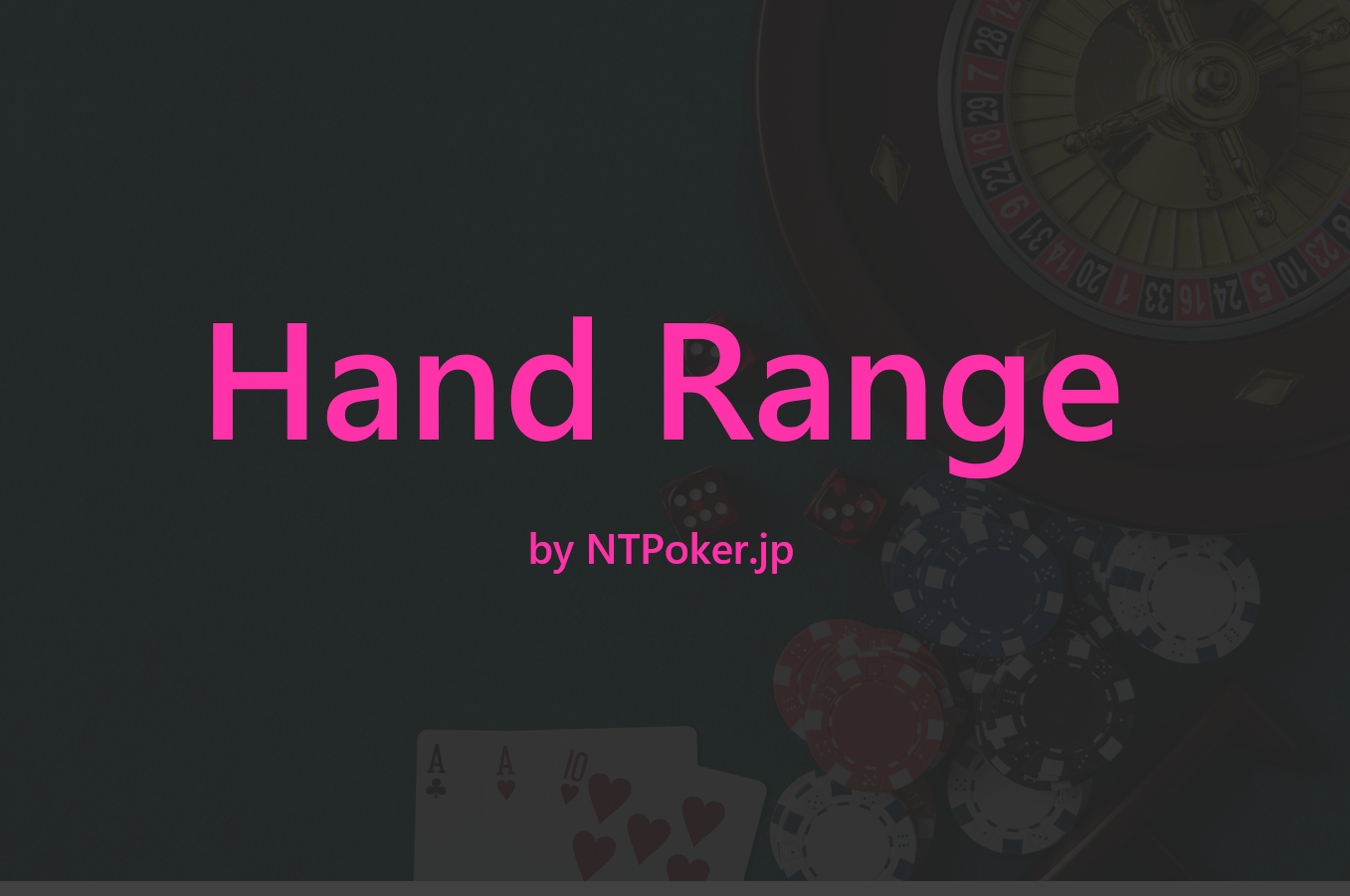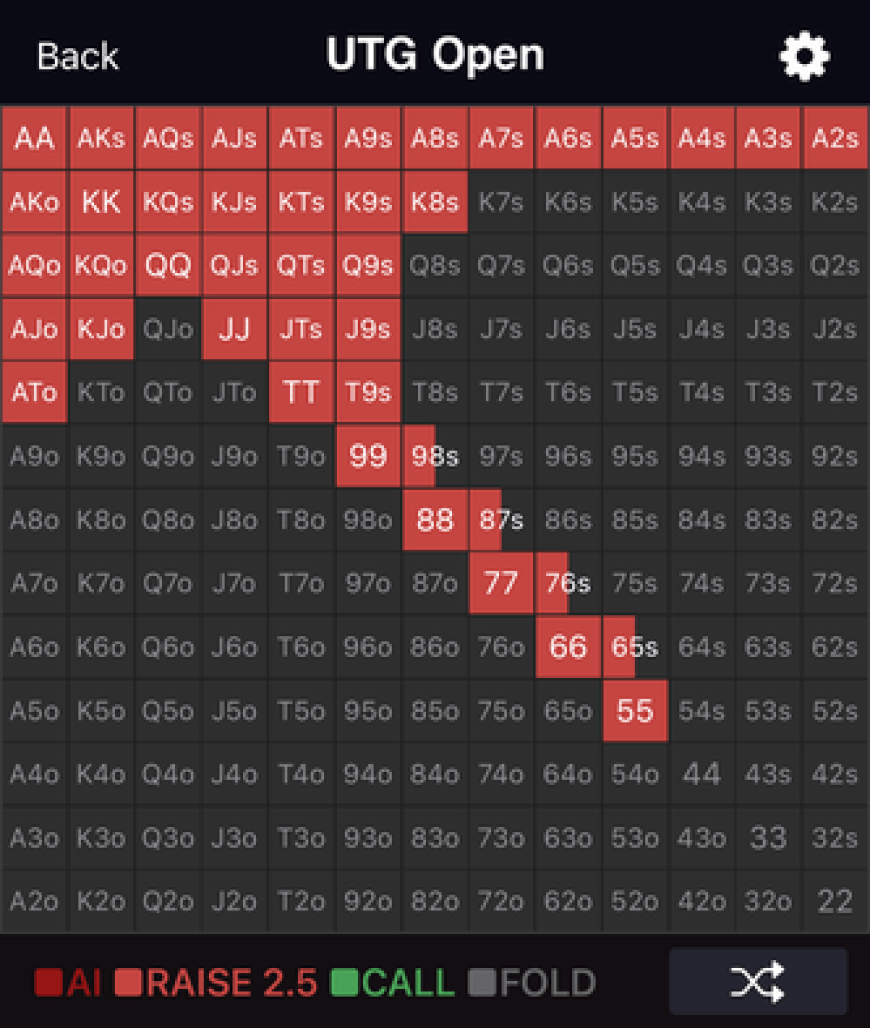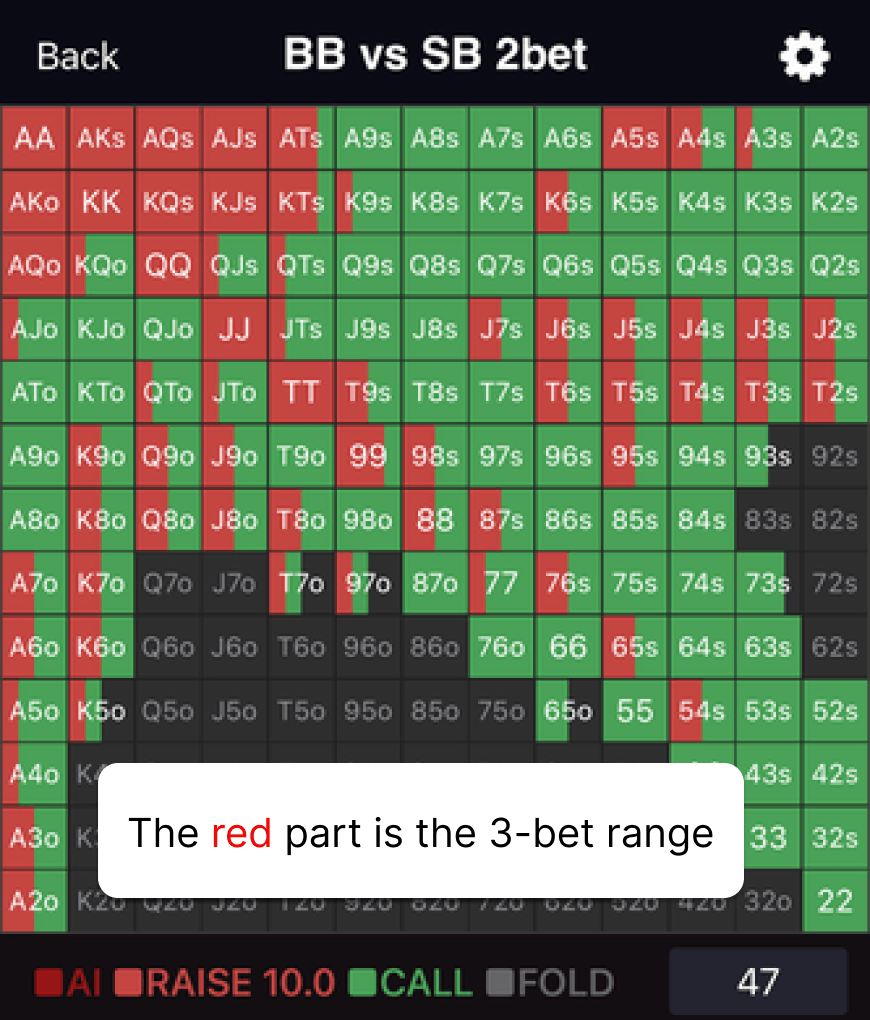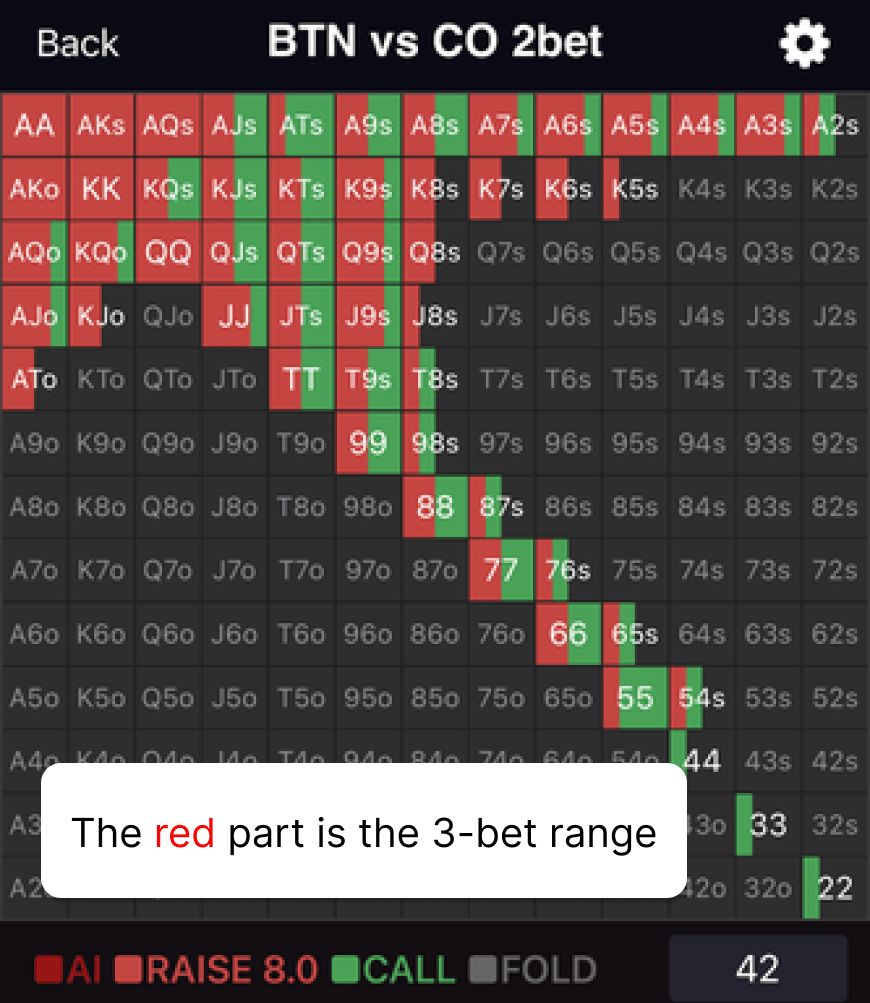[ Thorough Explanation ] Explains the key points to remember about hand ranges!
![[ Thorough Explanation ] Explains the key points to remember about hand ranges!](/static/7373e1334c58191214b770cff5602bea/b1985/handrange_memorize_header.png)
Table of Contents
What are Hand Range Charts
 In poker, a hand range is a chart that shows at a glance what action should be taken pre-flop. This article will explain concretely how to memorize hand ranges for practical use.
In poker, a hand range is a chart that shows at a glance what action should be taken pre-flop. This article will explain concretely how to memorize hand ranges for practical use.
For a detailed study on hand range charts, please refer to the following article.

【Pre-flop】An In-depth Guide to Understanding Hand Range Charts in Pre-flop Poker!!
A hand range chart is a summary that outlines what actions to take with your hands during the pre-flop stage. This guide explains how to read hand range charts and their importance.
Read MoreHow to Memorize Hand Range Charts

Memorizing hand range charts, given their variety, requires a considerable effort. Therefore, we'll explain three key points for memorization:
- Understanding the Structure of Hand Ranges
- Memorizing the Bottom Limit
- Training
Understanding the Structure of Hand Ranges
Understanding the structure of hand ranges significantly speeds up the memorization process. Even if you don’t memorize every detail, understanding the concepts and approach allows you to deduce the appropriate action in any given situation.Hand ranges can be classified into four types of range structures:
- Linear Range
- Polarized Range
- Condensed Range
- Mixed Range of Polarized and Linear Ranges
Linear Range
A linear range simply determines the strength of actions based on the strength of the hand. It's the most orthodox range structure in hand ranges.It ranges from strong hands in a top-down manner to medium-strength hands. The pre-flop in poker primarily adopts this range structure.
- Specific Examples
Participate with strong hands and not with weak hands. ② 3bet Range Except for BB:
Raise only with strong hands. Depending on the position, include hands that can bluff post-flop.

Polarized Range
A balanced range mixing strong and weak hands.- Specific Examples
② 4bet Range:
The concept is similar to the BB’s 3bet range. Note that the SPR becomes smaller when 4betting, so be cautious in selecting hands.

Condensed Range
A range composed of medium-strength hands. It's designed to maintain high equity against many flops.- Specific Examples

Mixed Range of Polarized and Linear Ranges
This range mixes medium-strength hands into a polarized range.- Specific Examples
In high-rake situations, expand the 3bet range with medium-strength hands that have low EV when calling.

Memorizing the Bottom Limit
Memorizing every hand in every position is an enormous task. As a tip, focus on memorizing only the key points:- Range Bottom Limit
- Adjustments from the Bottom Limit
This section introduces examples from the NTPoker app's 6Max, 100BB, cash game ranges.

Additionally, you can estimate ranges by adjusting positions. If you can open with ATo from UTG, can you open with A9o from a slightly stronger position like HJ? The actual range for HJ is also ATo, but opening with the adjacent A9o is not a significant mistake.
Key points that will make memorization much easier are summarized below. In reality, you will need to memorize more complex ranges, but the ‘essential’ elements are as follows:
UTG Open ATo A2s, K8s Pocket 5s BTN Open A4o Q2s, J4s Pocket 2s Primarily participate with a raise No limping range No calling range against opens, except for BTN and BB (always raise if participating) A4s, A5s are often used in bluff 3bet ranges.
Training
We've discussed understanding the structure of hand ranges and key points to memorize, but ultimately, it's necessary to diligently practice and memorize.Many players can play the open range with reasonable accuracy, but many are uncertain about their 3bet and 4bet ranges.
The key to memorizing hand ranges is to work through a large volume. NTPoker focuses on providing a user-friendly UI for repetitive hand range practice, offering this feature for free.

Summary
 This article has explained how to memorize pre-flop ranges in practice. First, thorough memorization is extremely important. However, as explained in the beginning, the optimal pre-flop range continuously changes according to various conditions.
This article has explained how to memorize pre-flop ranges in practice. First, thorough memorization is extremely important. However, as explained in the beginning, the optimal pre-flop range continuously changes according to various conditions.This is not limited to visible factors, as in some cases, adapting to the opponent's playstyle is optimal. Therefore, it's necessary to firmly memorize standard ranges and make flexible, specific decisions based on them.
Study pre-flop thoroughly and work towards steadily improving your balance.

